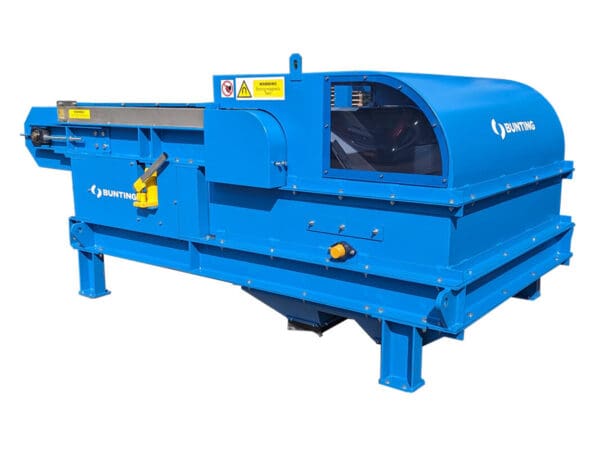
ICS Cool Energy Cold Storage Unit Hire Guide
Playing an essential role in the cold supply chain, cold storage units are a very popular solution for organisations wanting the same thing – To help store their goods safely at a precise temperature, that can be positioned quickly with minimum disruption to site.
Ralph Howes, Cold Store Major Accounts Manager, ICS Cool Energy:
Cold stores can be used in many different applications, including frozen or perishable food and beverage products or pharmaceutical goods.
Prototype or New Product Development, such as automotive manufacturers and engineering companies, may use the units for product endurance testing in extremely hot or cold conditions to replicate global climate conditions. This can remove the need for shipping prototype products around the world. A cold storage unit, also known as a refrigerated container, is based on a shipping container with an integrated refrigeration system. Along with high-quality insulation and intelligent controls, cold stores can maintain the temperature, humidity and atmosphere at a constant value.
Designed to be easily transported, they are typically 10 ft, 20 ft, or 40 ft in length and well-designed units should make it simple and easy to organise products, with the ability to fit pallets or racking systems inside.
Why Hire a Cold Storage Unit?
Hiring, rather than buying, is the go to option for most organisations.
If your business is expanding, you’ll want a solution that can grow with you without the risk of investing capital. A cold storage unit’s fast installation process and modular nature means you can easily add more to your site as your needs increase. Hiring means you’ll have access to engineering specialists who can help you set up and manage your unit. The engineers will optimise the cold store for your specific requirements, which will help lower energy costs.
The temperature control technology in the most advanced cold storage units is always developing. By hiring a unit, you can easily swap to the latest tech should you need a more efficient or lower Global Warming Potential (GWP) alternative. Whilst cold storage hire may be more straightforward than boiler or chiller hire, there are several requirements you should look for when choosing who to partner with. Along with outlining what to look for in a unit, in this article, we talk through what needs to be considered during the installation process.
Requirements of a Cold Storage Unit
Not all cold store units are built the same, and most older models won’t have the technology needed to maintain optimal temperature and maximise efficiency.
Temperature: Temperature control is why you want a cold storage unit, and should be central to your hiring process. Check if the team can reach your required temperature or temperature range to store your products.
The standard range on the market is -25°C to +25°C. At ICS Cool Energy, our units range from -40°C to +30⁰C. If you need to go to a low temperature very quickly, there are ‘blast freezers’ or ‘super freezers’ that can reach -70°C. These are mostly used for blood plasma storage, valuable pharmaceuticals, or food products such as sushi-grade fish.
Fast pull-down mode: Units with a superior cooling capacity will have more power to reach your specified temperature much faster. Whilst you may not need to freeze to -40°C, the fast pull-down ability will cool your product quicker to help maintain freshness and the product’s life.
Ventilation: If your products are chilled and not frozen, they will slowly ripen. This ripening process emits gases that must be removed from the unit, so fresh air ventilation is necessary if you intend to store fruit and vegetables. The ventilation will also help remove excess heat from when you first fill the container with your produce.
Our units feature Advanced Fresh Air Management technology as standard. You specify your desired fresh air rate on the unit controller, and the intelligent control will do the rest.
Humidity: The ability to regulate humidity will significantly affect the unit’s temperature control and performance. Any moisture in the air or condensation from within could spoil your fresh produce.
Therefore, the unit must have a dehumidification function to help control humidity. Our units can maintain humidity at +/- 2%, the lowest setting of 50% RH.
Drainage: To help prevent bacterial growth and cross-contamination, drainage gullies and holes will help remove any excess water from the cold storage unit and help keep it clean.
The one-way drainage system will only flow out of the unit, preventing air or moisture from entering.
Remote monitoring: For complete peace of mind, cold store units can be connected for one-way and two-way communication. The remote monitoring module features everything you need to help manage and optimise the team, which reduces the risk of stock losses and food safety issues.
Energy data will inform you about the unit’s performance, enabling you to make more informed decisions about energy consumption without compromising your produce.
Usability features: From non-slip flooring to internal lighting and access ramps, ensure the unit has everything you need to make work easy and fast.
Safety: All ICS Cool Energy units have an internal alarm and mantrap escape mechanism. The escape mechanism is a small hatch fitted to one of the doors that can be opened from the inside.
Sustainability: Efficiency and type of refrigerant used should be part of your hiring decision, especially if your organisation has a sustainability procurement programme.
The advanced controller units optimise power consumption, delivering significant cost and energy savings.
Our containers, from the leader in transport temperature control solutions Thermo King, are available with the low GWP industry-standard R-134A refrigerant or, for even less environmental impact, with the R-513A drop-in refrigerant.
Installation considerations
Cold storage engineers will guide you through the entire installation. However, understanding some criteria and planning ahead in case of an emergency can help speed up the installation process.
Ground requirements: The ground should be flat, have a hard surface and not be liable to flooding.
An empty 40ft refrigerated container is about 3.5 tonnes, so if the unit must be installed on grass, the soil structure needs to be solid enough to withstand sinking. This option is only recommended for short-term solutions and emergencies.
The total weight of the cold store and product must be considered. Still, as long as the ground is firm and reasonably level, cold storage units are very flexible and straightforward to install in most applications.
Height clearance: The unit will come to your site on the back of a lorry, and often, units will have to get craned into place.
There must be no overhead cables or obstructions that could get in the way during installation.
Electrical installation: ICS Cool Energy cold store units are fully electric, with an optional diesel generator as a backup.
The units are truly plug and play and quick to install, and the closer we can get to your distribution board, the cheaper the installation will be.
Modular structures: Multiple cold stores joined without connecting walls to create one big open unit. Compared to building a cold room, this doesn’t require time-consuming engineering, groundwork, or a long, drawn-out planning permission process.
The off-site construction of modular cold stores also means less interruption to the business and much shorter lead times. Your business can continue operating while assembly work is completed outside the current business process. Modular installation typically takes days, whereas conventional building methods can take months on site and take up large areas of space for materials and machinery relating to the build. Once finished, they can be removed without large dilapidation costs if you move out of rented premises.
Get in contact with ICS Cool Energy here.
Read More on ICS Cool Energy Here | PlastikMedia







